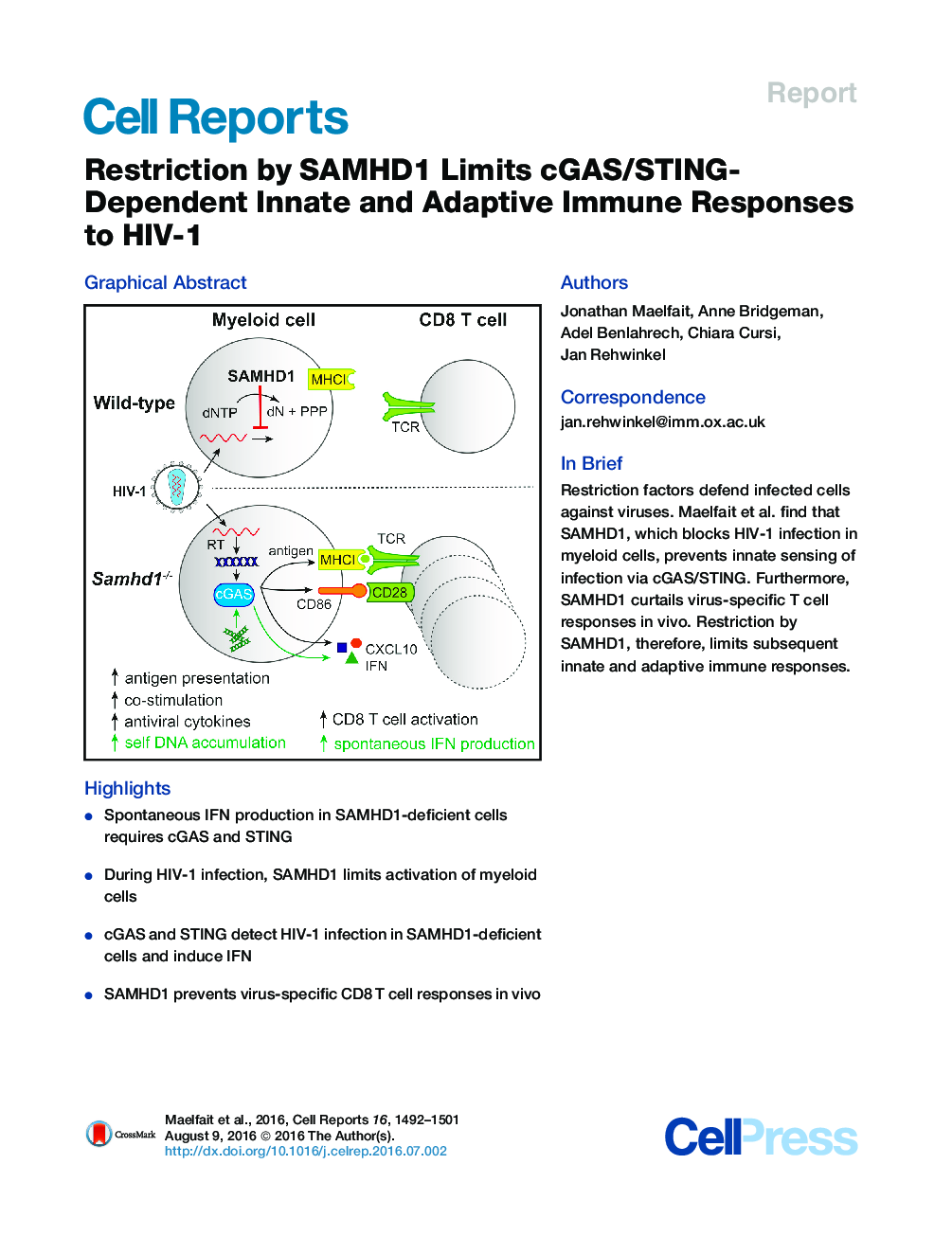| Article ID | Journal | Published Year | Pages | File Type |
|---|---|---|---|---|
| 2039986 | Cell Reports | 2016 | 10 Pages |
•Spontaneous IFN production in SAMHD1-deficient cells requires cGAS and STING•During HIV-1 infection, SAMHD1 limits activation of myeloid cells•cGAS and STING detect HIV-1 infection in SAMHD1-deficient cells and induce IFN•SAMHD1 prevents virus-specific CD8 T cell responses in vivo
SummarySAMHD1 is a restriction factor for HIV-1 infection. SAMHD1 mutations cause the autoinflammatory Aicardi-Goutières syndrome that is characterized by chronic type I interferon (IFN) secretion. We show that the spontaneous IFN response in SAMHD1-deficient cells and mice requires the cGAS/STING cytosolic DNA-sensing pathway. We provide genetic evidence that cell-autonomous control of lentivirus infection in myeloid cells by SAMHD1 limits virus-induced production of IFNs and the induction of co-stimulatory markers. This program of myeloid cell activation required reverse transcription, cGAS and STING, and signaling through the IFN receptor. Furthermore, SAMHD1 reduced the induction of virus-specific cytotoxic T cells in vivo. Therefore, virus restriction by SAMHD1 limits the magnitude of IFN and T cell responses. This demonstrates a competition between cell-autonomous virus control and subsequent innate and adaptive immune responses, a concept with important implications for the treatment of infection.
Graphical AbstractFigure optionsDownload full-size imageDownload as PowerPoint slide
